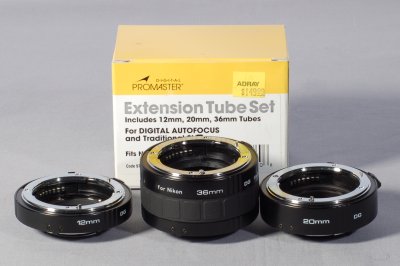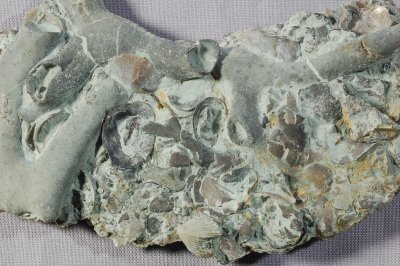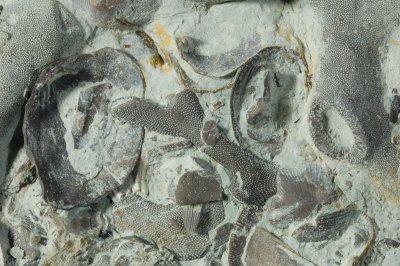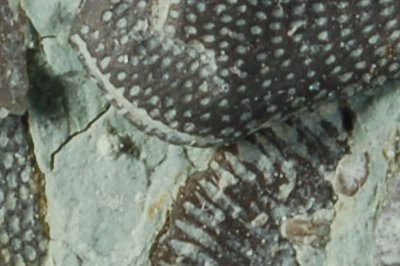Two Infinities
Sun, 03 Jun 2007
Using extension tubes to photograph a fossil
Recently I visited the photo store to shop for a macro lense for my Nikon D-50. The camera is a paradigm of sophisticated technology modern manufacturing has put within reach of someone of modest means. The Nikon macro lenses have not followed suit (yet), the least expensive costing more than the D-50 body. So I purchased a 12-20-36mm set of extension tubes for $150. Surely I need not have spent so much--Rick at Shutter Freaks reports paying half as much for his Canon--but you are paying for more than the product when you go to a camera shop...

The benefit of the extension tube is to allow the lens to focus on closer objects without significantly changing in angle it subtends, thus increasing the angular magnification. Wikipedia has more detail. The downside is that the lens cannot focus on distant objects. Furthermore, built-in calibration of a zoom lens that keeps an object in focus while zooming no longer works, of course. Also a longer extensions and shorter focal lengths, the distance between the nearest and farthest object that can be brought into focus becomes so small as to make focusing difficult. But, hey, a microscope is useful with a narrow range of focus andwithout the capacity to focus on distant objects.
For my own records, at least, here is ranges I get for the Nikkor AF 70-300mm set at 70mm. Distances are approximate (precise to 1/8") and are what I measured between the focal plane mark and the object. At some point between the 20mm and 36mm extension, the minimum and maximum distances invert with respect to extending or retracting the objective lens!
| Lens retracted | Lens extended | |
|---|---|---|
| no extension | 60" | infinity |
| 12mm extension | 22.125" | 24.125" |
| 20mm extension | 18.875" | 19.25" |
| 36mm extension | 15.375" | 14.75" |
To illustrate, here is a wonder fossil picked up by Bill Haywood, forester, author and rock hound extraordinaire. He says this about it:
This is out of the ordovician era. Corals were just barely evolving. The main fossil in the center is a branching coral and some researchers think that it might even have been a sponge but we are sticking with branching coral. Most of the other fossils are brachiopods. This deposit was made about 500 million years ago. The layer you are looking at is blanketed by limestone so the ocean must have receded and this was a clay deposit in a delta area. How about the detail on those fossil surfaces!?The area from the 12mm extension is about 4" by 2.625":

and the area from the 36mm extension is about 1.75" by 1.125":

Finally, here is a pixel-for-pixel detail from the previous shot:

posted at: 16:00 | path: | permanent link to this entry
